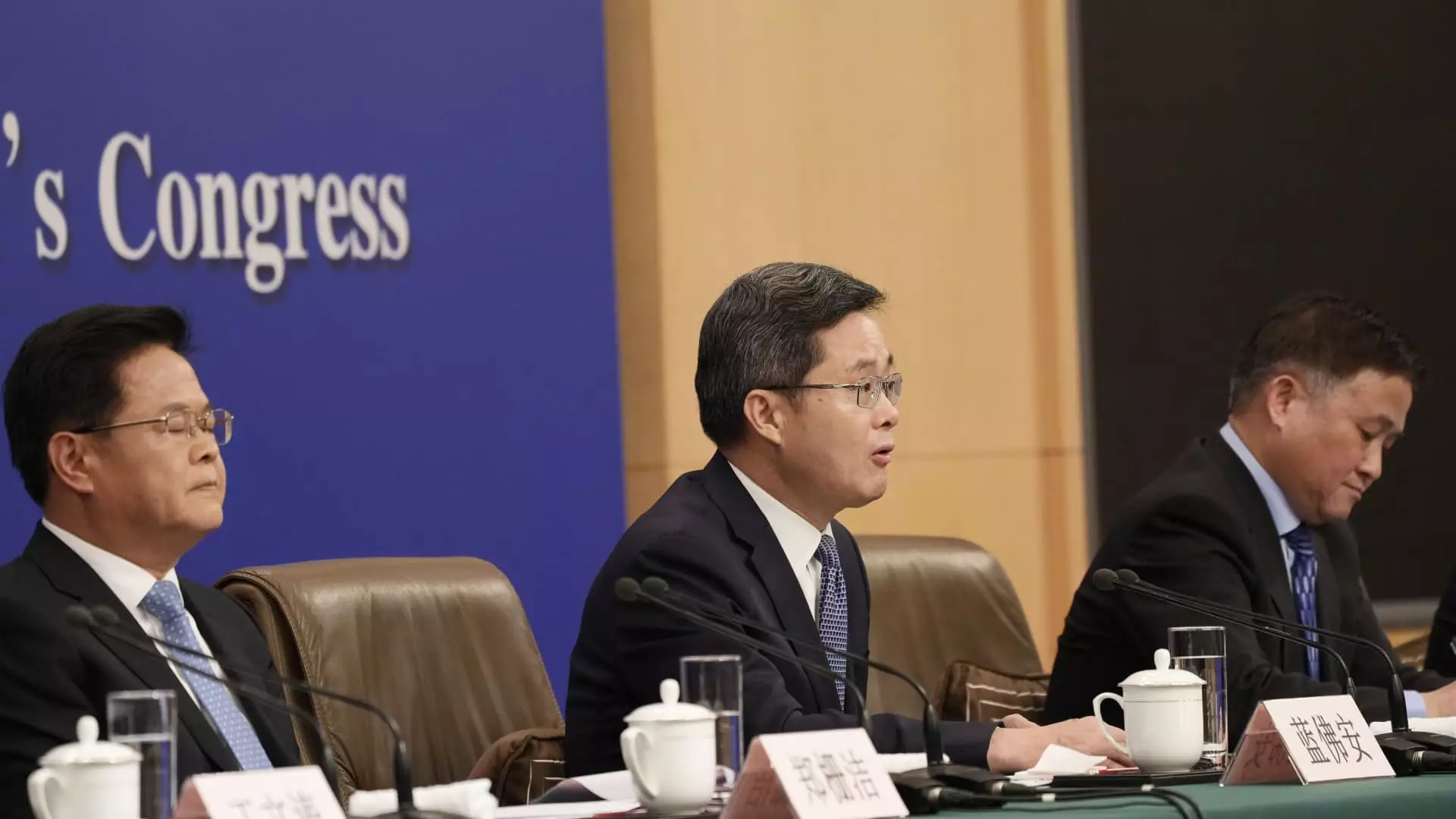As China faces multiple economic challenges, the spotlight is currently on the country’s fiscal policy and the anticipated press conference by Minister of Finance Lan Fo’an. Scheduled for Saturday, this event is viewed as a critical moment for revealing potential measures aimed at bolstering the Chinese economy. Although economists have advocated for greater fiscal support, the Chinese government has remained relatively reticent, failing to disclose specific plans despite a series of recent policy announcements.
The urgency for economic support stems from several alarming trends. China’s retail sector has witnessed only tepid growth over recent months, and the ongoing real estate crisis shows scant signs of stabilization. The nation’s GDP growth rate, while recorded at 5% for the first half of the year, raises flags regarding the feasibility of achieving the full-year target, set at around 5%. This projection of economic stagnation is compounded by the scheduled release of third-quarter GDP data on October 18, which is expected to provide a clearer picture of China’s economic trajectory.
The pressing need for fiscal stimulus is underscored by analysts like Ting Lu, chief China economist at Nomura, who emphasizes the necessity of parliamentary approval for any proposed financial interventions. Current estimates of fiscal support range widely, from approximately 2 trillion yuan ($283.1 billion) to a staggering 10 trillion yuan. However, the efficacy of such stimulus is contingent not only on the financial injection itself but also on the strategic deployment of these funds.
Crucially, there are concerns about whether the financial aid will primarily address the dire fiscal situations of local governments or be strategically invested to invigorate consumer spending. The latter is particularly vital in a post-pandemic recovery phase, where consumption-driven growth can sustainably counterbalance the effects of a sluggish economy.
Recent market fluctuations demonstrate the volatile nature of investor confidence in the Chinese economy. Following a week-long holiday, the reopening of mainland Chinese markets witnessed heightened instability, punctuated by a failed stimulus rally that saw stock indexes revert to late-September levels. This volatility reflects the broader uncertainty in the financial markets, which had experienced a brief resurgence after significant policy announcements aimed at stimulating growth.
In response to the prevailing economic malaise, the People’s Bank of China (PBOC) has taken decisive measures, including interest rate cuts and an extension of existing real estate support initiatives. A remarkable $71 billion program was launched, enabling institutional investors to borrow funds for stock investments. Additionally, the National Development and Reform Commission (NDRC) has made commitments to accelerate the utilization of funds initially designated for next year’s projects, although it has refrained from announcing any new stimulus measures.
As the October 18 GDP data release approaches, the pressure mounts for the Chinese government to deliver concrete financial strategies that address pressing economic concerns. The economic landscape is fraught with uncertainty, from the trajectory of the real estate market to consumer confidence in retail sales. The government’s ability to infuse the economy with effective stimulus measures could play a pivotal role in determining whether China can achieve its economic targets or if a prolonged slowdown is imminent.
Ultimately, the outcome of Minister Lan Fo’an’s press conference will be closely scrutinized, not just by domestic stakeholders but also by global markets that are increasingly affected by China’s economic health. As we await the government’s next steps, the complexities of managing fiscal policy in the face of slow growth serve as a reminder of the delicate balance required to foster stability in the world’s second-largest economy. Investors and citizens alike will be hoping for measures that not only inject capital into the economy but also cultivate a healthier and more resilient economic environment.

